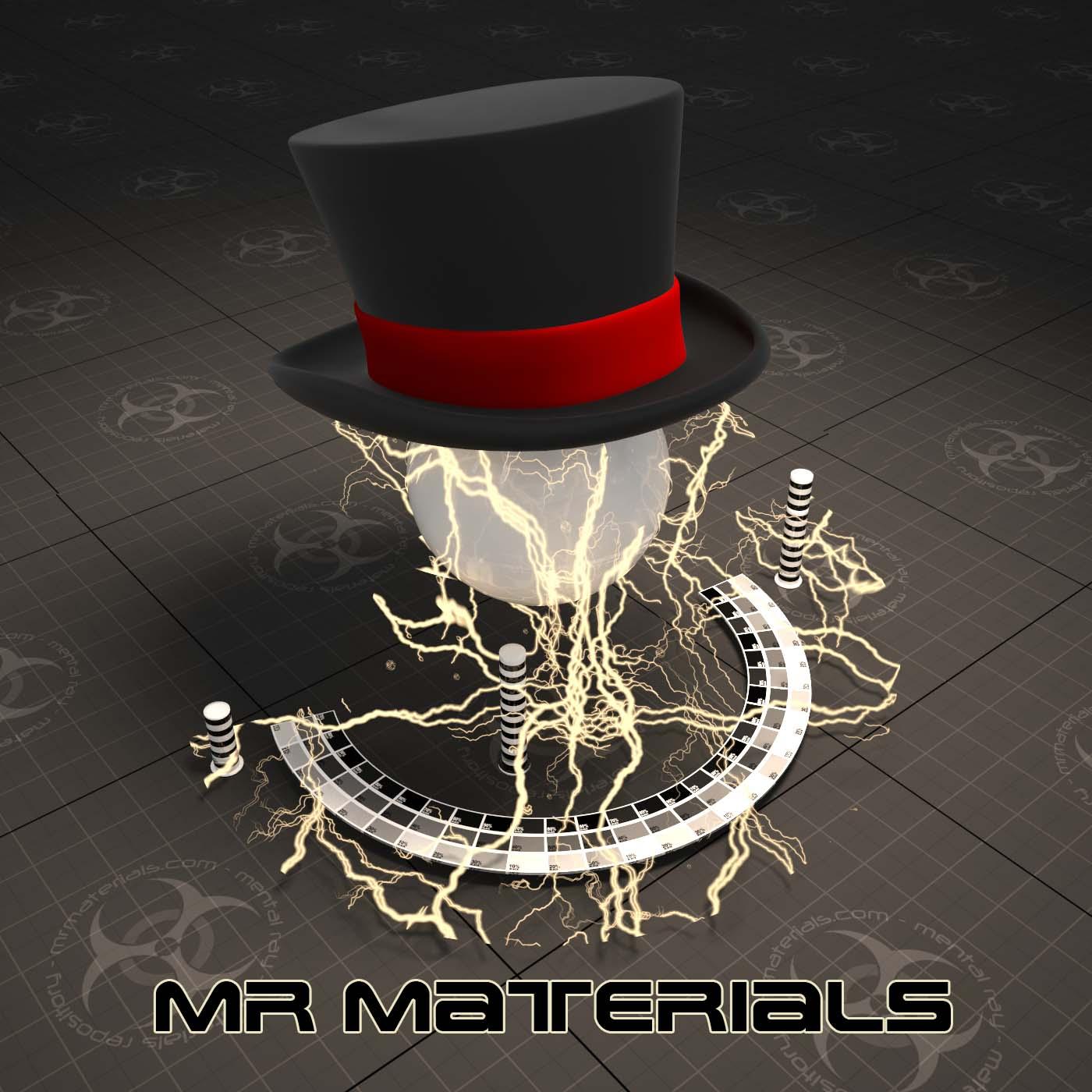Interview with Edwin Braun
3DA is excited to be interviewing Edwin Braun CEO of cebas Visual Technology Inc. to discuss the fourth major release of their render engine finalRender. MrMaterials a subsidiary of 3DAllusions LLC is including the interview here as it is timely with our new support of finalRender.
Today we are interviewing Edwin Braun CEO of cebas Visual Technology Inc. which is a privately held software company founded in 1988 in Heidelberg, Germany, and now headquartered in Victoria, BC, Canada. The company's advanced tools allow users to achieve realistic and compelling visual effects that are scientifically accurate and engineered entirely based on physics.
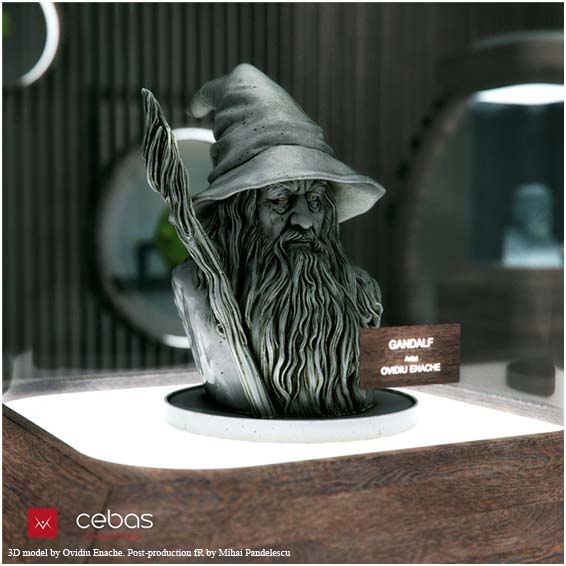
3DA: You have just released a new version of your rendering program finalRender, it seems like a very unique time in our industry for a major release like this. What are your thoughts about mental ray being dropped by Autodesk as their integrated third party render engine being replaced by 'Arnold' and the new acquisition of the big up and comer 'Corona Renderer' by Chaos Group. It seems that there is some potential opportunity due to a bit of chaos in the industry.
Edwin: Chaos is the right word, I would say. It is not like the world has ended for the rendering industry in 3ds Max. Life will go on.
Creating a good quality renderer was and still is a huge task at hand – it needs a lot of planning and foresight. Autodesk always had an underlying issue with their rendering solution, since the birth of their original Scanline renderer - nothing really great and innovative has happened. Several approaches in offering a rendering solution for 3ds Max have failed and have been silently scrapped over time. The latest victim to this collection of rendering abominations seems to be the “ART” renderer - the youngest of the shooting stars of rendering. We all know how this ended: Autodesk sought out and bought a team who knows how to write and create a renderer (Arnold).
For the move on Corona I guess time will tell, what it shows is that rendering is a fierce market and highly over saturated. The gold rush seems to be coming to an end and the market will level out over time.

3DA: If you were to given a chance for an elevator pitch for finalRender what might it be?
Edwin: finalRender offers all the photo-real quality every renderer promises with the unique benefit of being absolutely future proof. finalRender is built on concepts and ideas that will benefit more with future inventions of rendering hardware and software technology. finalRender is virtually a digital camera that is able to capture reality like no real camera will ever be able to do.
3DA: Tell us about the Hybrid (CPU/GPU) rendering engine. Is it related to your moskitoRender GPU render engine?
Edwin: Yes and no. The core is based on our experience we gained when we developed moskitoRender, however, it has evolved so much that it is no longer the same thing. What we could achieve was an industry first: A full-grown complex rendering solution that is behaving exactly the same regardless of hardware used. GPU and CPU are creating pixel identical results all the time with the FULL set of materials and shaders. You may say many claim to have some sort of “Hybrid” mod, but actually they don’t. Many rendering solutions have an endless list of restrictions that are NOT available when using GPU and this makes it practically a separate product! What use do you have if your GPU cannot render the scene as is? What use do you have, if you have to use another CPU renderer to finish your rendering as you intended?
trueHybird™ is our trade mark technology that delivers on the promise to never change the renderer or materials to get a rendering done in either GPU or CPU. It just works with both GPU and CPU all the time – no compromise. This means the GPU uses the same algorithms and code to render an image, we do not offer ‘eye candy’ to make a GPU appear faster with not supporting 98% of shaders or rendering effects artists are used to in CPU renderers. As an example, let’s take the ‘Light Include/Exclude’ lists, a thing unheard of in a GPU renderer, with finalRender, however, this feature is supported on CPU and GPU, and adding this support for the ‘exclude list’ is a huge penalty on the GPU rendering side (speed wise), but it ensures the freedom of the artist and he or she has not to worry about the scene setup. In a sense, you can say we did the full grown unapologetic rendering engine approach on a GPU a thing no one else dared to do or to offer. We trust that future generations of hardware will be able to cope more and more with complex rendering algorithms to a point when it actually does no longer matter if it is GPU or CPU.

3DA: It sounds like a major feature and strength to this release is the frame buffer, can you tell us about it and what separates it from what other render engines offer.
Edwin: Like empowering with our trueHybrid technology, we see the frame buffer as our future playing field. It will grow better and bigger in time as well. Right now, you can already skip your extra Photoshop sessions to develop a raw image out of your rendering. We offer all the important tools to adjust the exposure, color tint, contrast and many more. On top of that, we do offer an unlimited render history and a clever way of handling animations and render elements. Real time Glare and De-noise filters are also available. Right now, with our first release we have pretty much covered all of the essentials. More will come with each new iteration and enhancements that will be available for free as they become available for our subscription users.
3DA: Another interesting feature is the multi-threaded IES area light which it seems is one light type configurable to most scenarios, can you tell us about it? Is it linked to physically unbiased rendering?
Edwin: our fR-Area light is meant to be the “One Click Wonder”, it is very flexible and you can do nearly all of the light types you can dream of. It is a highly optimized low noise area light and you can turn it into a directional area light as well. Best of all - it is also the most accurate and optimized IES light you can get for 3ds Max. With one light type you can handle nearly every lighting situation. Isn’t this amazing.
3DA: Can you tell us about Physically Based (Spectral) Wavelength Simulation in your unbiased rendering process and how it differs from other render engines?
Edwin: Firstly, there are not many rendering solutions out there offering real physically accurate light simulation. The concept and idea of spectral rendering instead of RGB is nothing new and was suggested by many scientists in the industry. Along with unbiased path tracing, to date It is the only known method to reproduce realistic light behavior in a rendering. Ideally, all spectral rendering solutions should create the same realistic and physically accurate rendering.
The new thing we did here, with our approach for finalRender, is getting it into a mainstream animation package which allows hundred of thousands of artists to experience a new level of quality in rendering right from within 3ds Max.
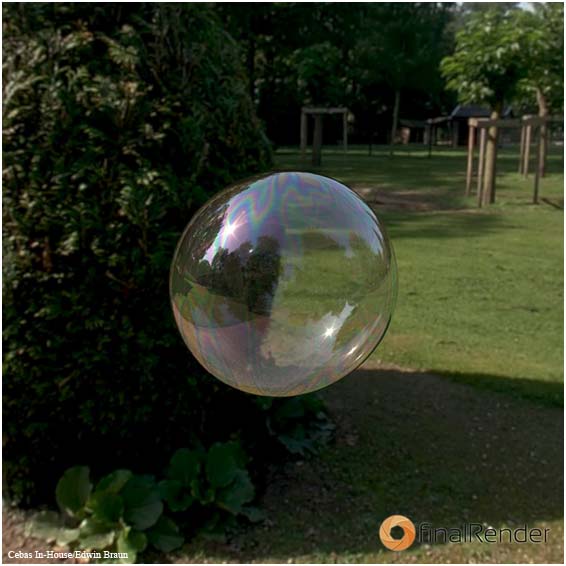
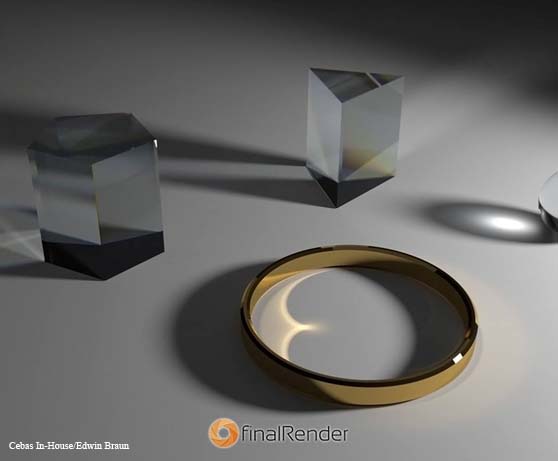
3DA: There is some frustration in the industry with render nodes seeming to be a money making commodity sold in small batches. You have gone a slightly different route with one relatively low price for unlimited render nodes. Can you explain the default amount of render nodes and the unlimited version, and if they run through 'Backburner' and other render farm software or is a proprietary system used.
Edwin: Like our rendering solution, the license model we use is very simple and straightforward to understand. Right out of the box, our workstation subscription license gives you access to all the power you might have in one machine. Which is an unlimited amount of CPU cores and up to 2 GPU cards at the same time.
If you need to render an animation on your personal network of multiple machines, you go ahead and get ONE unlimited Network Subscription Rendering license. It is the worry-free unlimited render power package! And If you are state-of-the-art all hooked on GPU rendering, we do offer an Unlimited GPU Subscription license as well. An unlimited GPU subscription license will allow you to use as many GPU devices as you can fit or attach to your workstation. Simple and fair isn’t it?
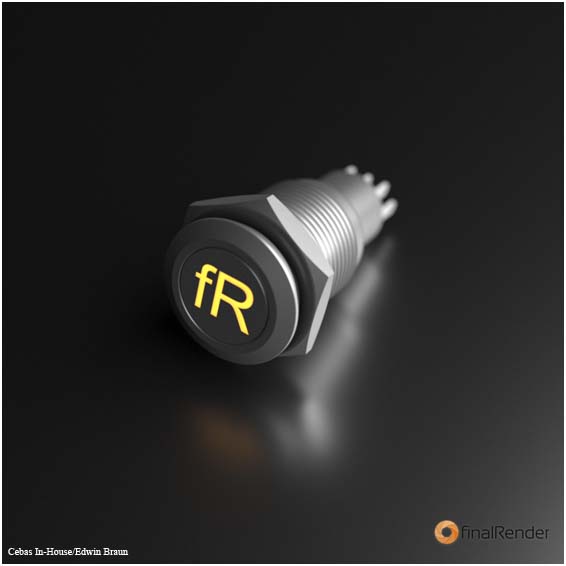
3DA: Render elements are an item that are surprisingly not used by some solo artist and hobbyist, it seems, can you tell us about your system? On a similar note, one of your products is PSD-Manager, which seems like a very useful plug-in, is it compatible with this version of finalRender.
Edwin: Yes, PSD-Manager is a good companion to finalRender, and the perfect tool for users with a Photoshop department or knowledge. Render elements are very powerful, and as you already mentioned, they are often ignored by the majority of visualization and design communities. We are going to do something about it. Our first step was the new frame buffer and how we present render elements to the user. It is now so simple to understand what is going on and how to use them to your advantage. In future iterations we plan to have more powerful features to do re-lighting or other kinds of “after the fact” image manipulations.
3DA: It would seem to me that for a render engine trying to take a bigger chunk of the market share, that a Scene Convertor would be a key factor to make a render engine a viable alternative due to the majority of content available for a couple of key players. Can you tell us about your scene convertor and future plans?
Edwin: finalRender’s Scene Convertor translates a scene from Mental ray and Vray. We did a lot of test and checks and we found that our scene conversion, from older scenes, sometimes works even better than the original renderer when loading its own older scenes.
Let me put out one statement about scene conversion, I think it is a shame that scene conversion is a “thing” at all. Not so long ago, scene conversion was not necessary and everything just worked in 3ds Max. No one would have even bothered to question if a material or atmospheric effect would work in 3ds Max with one or the other renderers. Autodesk started and forced this ‘scene conversion war’ by introducing their very own rendering solutions with each new version of 3ds Max. They introduced their ART rendering solution just to replace it with Arnold, shortly after they realized ART was not adequate and usable for the users. So now, 3ds Max ends up with too many external solutions and experiments which all meant that conversion is needed all over the place to get things working again.

3DA: It was exciting to see that finalRender was compatible with Forest Pack Pro, that is monumental and a key part to being a strong architectural visualization option. Do you have built in proxy features in the works or can you rely on third party programs to handle that?
Edwin: finalRender supports its own proxy objects and it also fully supports 3ds Max instancing as well as thinkingParticles instancing. Any tool in 3ds Max should work just fine as long as it properly integrates with the instancing concept of 3ds max.
3DA: Are there any other features or future plans that you would like to point out?
Edwin:We have a clear short-term road map and a long term road map as well. In the short term, we will see speed improvements and missing bits coming into finalRender upgrades. Things like Texture-Baking for example.
3DA: Any plans to port your software to other programs like Maxon's 'Cinema 4D'?
Edwin: Plans? Yes, but at present, we want to focus on developing for Max.

3DA: The million dollar question for anyone in a production setting is "What kind of performance and speed does it provide?" This question relates to still images and animation, time is money and the faster the render the more productive an artist is. What can you tell us about this version for performance and speed?
Edwin: Oh, … it is not that simple! Our little marketing puns tried to explain this results orientation. Speed does not decide everything. It is about getting to the final result in a reasonable amount of time.
Let me explain with a simple example; If you wanted run-of-the mill cheap (fast) quality images, you better get a 3D printed shiny poster, but if you want to have quality and depth and artwork like getting a real oil painting and this – for sure - will take some days or even weeks to finish.
finalRender does not take any shortcuts - it renders the real deal. Light is treated as spectral wavelengths like in the real world. For what it does, it is amazingly fast and unmatched. Can you render an image faster? Sure! Can you render the same quality? No, you can’t it is just not possible. Can you fake lighting and illumination to get a fast good looking result? Yes, sure. But this is not what finalRender does. finalRender right now delivers the fastest physically accurate rendering results available on 3ds Max. We want to make sure that our finalRender users are top of the line in quality, not just work, that they create.
3DA: Last but not least, where do you see the industry going in regards to rendering and real time display and where do you think finalRender will be in five years.
Edwin: It is clear that rendering power will keep increasing and finalRender will benefit in the future from this - more than any other rendering technology out there. Biased rendering will slowly die out as no one will accept physically inaccurate renderings anymore. Games and real time applications will always be different things; they will always get away with fake or biased rendering to deliver speed over absolute realism. FinalRender offers the rendering technology of the future now and it will be only getting better as time and new hardware comes by!
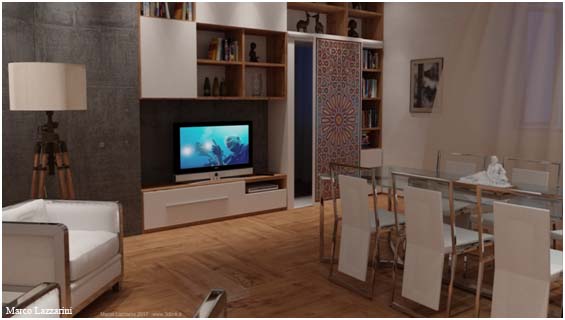
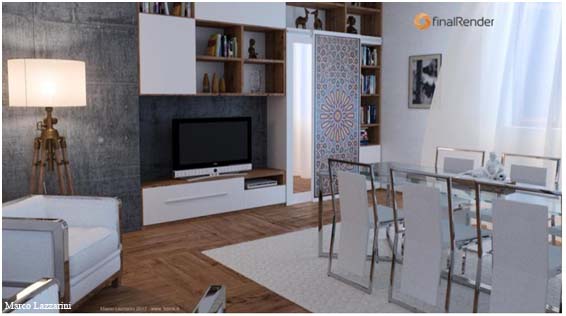
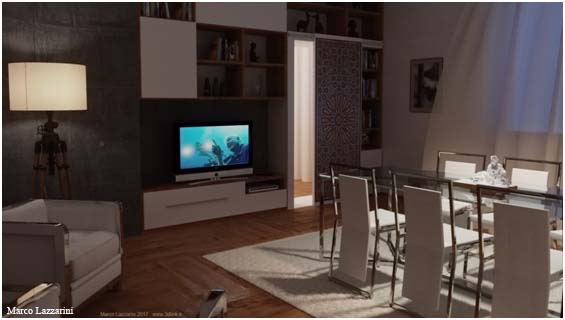
cebas VISUAL TECHNOLOGY Inc.
Suite 2202B – 4464 Markham Street
Victoria, BC V8Z 7X8, Canada
USA: +1 323 774 1799
Canada: Main office:+1 250.590.2913
http://www.cebas.com
